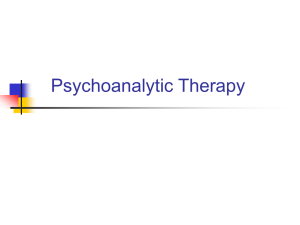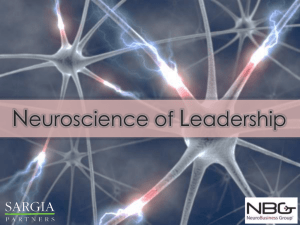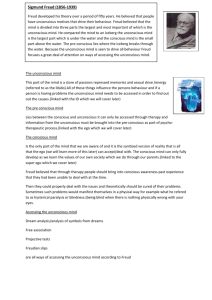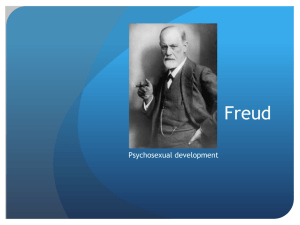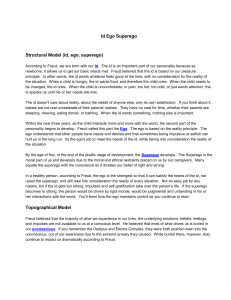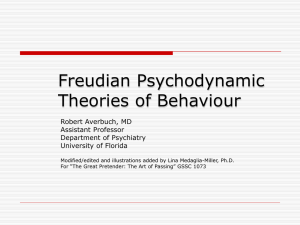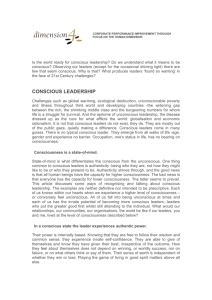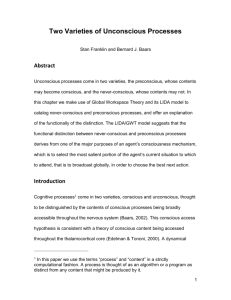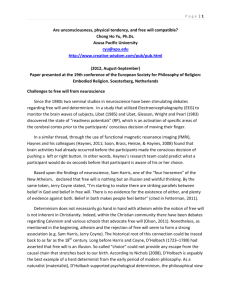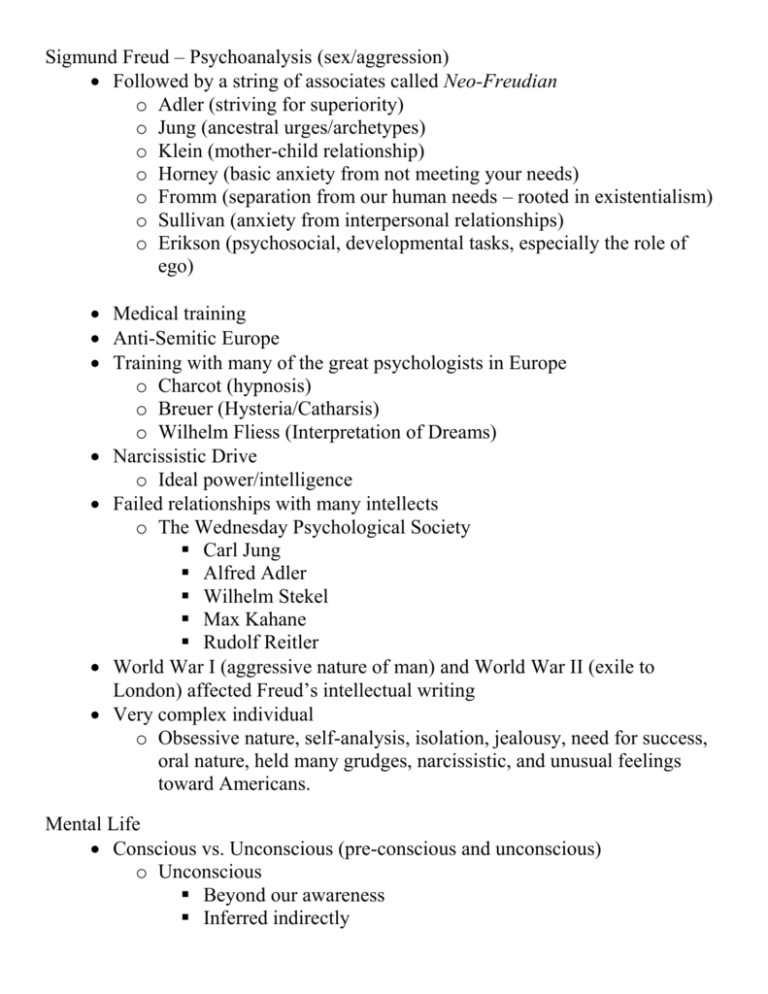
Sigmund Freud – Psychoanalysis (sex/aggression)
Followed by a string of associates called Neo-Freudian
o Adler (striving for superiority)
o Jung (ancestral urges/archetypes)
o Klein (mother-child relationship)
o Horney (basic anxiety from not meeting your needs)
o Fromm (separation from our human needs – rooted in existentialism)
o Sullivan (anxiety from interpersonal relationships)
o Erikson (psychosocial, developmental tasks, especially the role of
ego)
Medical training
Anti-Semitic Europe
Training with many of the great psychologists in Europe
o Charcot (hypnosis)
o Breuer (Hysteria/Catharsis)
o Wilhelm Fliess (Interpretation of Dreams)
Narcissistic Drive
o Ideal power/intelligence
Failed relationships with many intellects
o The Wednesday Psychological Society
Carl Jung
Alfred Adler
Wilhelm Stekel
Max Kahane
Rudolf Reitler
World War I (aggressive nature of man) and World War II (exile to
London) affected Freud’s intellectual writing
Very complex individual
o Obsessive nature, self-analysis, isolation, jealousy, need for success,
oral nature, held many grudges, narcissistic, and unusual feelings
toward Americans.
Mental Life
Conscious vs. Unconscious (pre-conscious and unconscious)
o Unconscious
Beyond our awareness
Inferred indirectly
Repression is the major defense mechanism
Unconscious urges can be come conscious only after they are
disguised
Conscious
Final censor
Preconscious
Primary censor
Unconsious
If impulses more to quickly to the conscious then we experience anxiety
The nature of phylogenetic endowment
These impulse motivate us and strive to become conscious
Preconscious – Are images from…
Conscious precepts
Unconscious itself
o Dreams
o Slips of the tongue
o Elaborate defense mechanisms
Conscious – Those mental elements in awareness at any given point in time.
Three-part Structural Model of the Mind (1920’s)
Superego (operates at the conscious/preconscious level – operates on the
moral principle)
Ego (operates at all three levels) – Operates on the reality principle)
Id – (totally unconscious – operates on the pleasure principle)
Dynamics refers to the motivational principle to explain the forces behind people’s
actions. These drives include:
Sex drive (Eros)..libido
o occurs in any erogenous zone
o primary narcissism (childlike)
o secondary narcissism (adolescent)
o Sadism & Masochism are a combination of both sexual and
aggressive drives
Aggressive drive (Thanatos)…no name
Anxiety results when these impulses are not kept in check
an uncomfortable state that has physical sensations and warns the
individual of impending danger
neurotic anxiety (ego dependency on the id) (apprehension of unknown
danger)
moral anxiety (ego dependency on superego) (temptation to do something
wrong)
realistic anxiety (ego dependency on the outer world) (like a real fear)
Defense Mechanisms protect the ego!
Repression
Reaction Formation
Displacement
Fixation
Regression
Projection
Introjection
Sublimation
Denial
Rationalization
Undoing
Intellectualization
Stages of Development
Infantile Period (first 4-5 years of life)
o Oral Stage (birth to 1.5 years)
The mouth becomes the important erogenous zone
Oral gratification
Oral receptive vs. oral sadistic
o Anal Stage (1.5 to 3 years)
Anus becomes the important erogenous zone
Early anal
Destructive period
Toilet training
Late anal
Erotic pleasure
Anal characters
Expulsive vs. retentive
o Phallic Stage (3 to 4 years)
Genitals become the important erogenous zone
Male Oedipal Complex
Female Oedipal Complex (Electra)
o Penis envy
Latency Stage (ages 4 or 5 to puberty)
o Dormant psychosexual development
Genital Stage (puberty onward)
o Sexual reawakening
Maturity
Freud’s later techniques included:
free association
o transference (counter transference)
o negative transference
overcoming resistance
dream analysis
manifest vs. latent content of dreams
o wish fulfillment vs. repetition compulsion
Slips of the tongue
o Also called parapraxes
o Reveal unconscious intentions
So what does the literature say about psychoanalysis?

